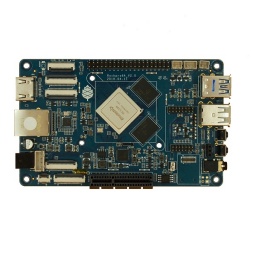Difference between revisions of "NixOS on ARM/PINE64 ROCKPro64"
Lopsided98 (talk | contribs) |
(Add note explaining that addr_ramdisk_r needs to be increased to boot the mainline kernel) |
||
| Line 74: | Line 74: | ||
* [https://github.com/ayufan-rock64/linux-kernel ayufan-rock64/linux-kernel] 4.4 based on Rockchip BSP | * [https://github.com/ayufan-rock64/linux-kernel ayufan-rock64/linux-kernel] 4.4 based on Rockchip BSP | ||
| − | * [https://github.com/ayufan-rock64/linux-mainline-kernel ayufan-rock64/linux-mainline-kernel] mainline based, with potentially fewer hardware features supported. This kernel is not based on a kernel stable branch, so it may have more bugs (unrelated to the hardware). | + | * [https://github.com/ayufan-rock64/linux-mainline-kernel ayufan-rock64/linux-mainline-kernel] mainline based, with potentially fewer hardware features supported. This kernel is not based on a kernel stable branch, so it may have more bugs (unrelated to the hardware). {{note|The kernel image built from ayufan-rock64/linux-mainline-kernel is too large to fit into the default memory layout defined in the rockpro64 u-boot. This means that, when unpacked, the kernel will overwrite the beginning of the initrd in memory, rendering the initrd unusable and causing the boot to fail. This can be fixed by setting the u-boot environment variable, <code>addr_ramdisk_r</code> to a larger value, either by interrupting u-boot, or by patching the ubootRockPro64 sources to change the default.}} |
| − | |||
{{note|Keep in mind that using non-upstream forks of the kernel always incurs some security risk.}} | {{note|Keep in mind that using non-upstream forks of the kernel always incurs some security risk.}} | ||
Revision as of 12:09, 22 August 2019
| PINE64 ROCKPro64 | |
|---|---|

| |
| Manufacturer | PINE64 (Pine Microsystems Inc.) |
| Architecture | AArch64 |
| Bootloader | Downstream (ayufan) U-Boot[1] |
| Boot options | SD, eMMC, SPI NOR Flash |
The ROCKPro64 is a powerful single board computer built around the Rockchip RK3399 SoC.
There are two models of the board, with 2 or 4 GB of RAM. It can boot from an microSD card or an eMMC. It also has a 128 Mbit SPI flash that can be used to store the bootloader.
Status
It is possible to run NixOS on this board using a downstream U-Boot and kernel. This can be done with manual partitioning and nixos-install or possibly by building an SD image with the correct kernel and bootloader, but the latter has not been tested.
U-Boot for this board is packaged in nixpkgs, and Hydra builds can be found here: https://hydra.nixos.org/job/nixpkgs/trunk/ubootRockPro64.aarch64-linux This bootloader is not entirely open, incorporating blobs for the tertiary program loader (TPL) and ARM trusted firmware (ATF).
Board-specific installation notes
U-Boot needs to be copied to sector 64 on the microSD card or eMMC with dd. Download/build U-Boot for the board, and copy idbloader.img to the correct location with (replace /dev/mmcblkX with the correct path to the SD card device):
sudo dd if=idbloader.img of=/dev/mmcblkX bs=512 seek=64
On many kernels, the ethernet driver cannot handle hardware check-summing of large packets, therefore this feature must be disabled for the ethernet to be stable. This can be done with the following NixOS configuration:
networking.localCommands = ''
${pkgs.ethtool}/bin/ethtool -K eth0 rx off tx off
'';
Serial console
The ROCKPro64 uses a GPIO pinout compatible with the Raspberry Pi 2 and newer. This means that the following pins can be used to connect a serial adapter:
| Pi-2 Bus | |
|---|---|
| Pin | Function |
| 6 | GND |
| 8 | UART0_TX |
| 10 | UART0_RX |
The serial console runs at 1500000 baud in the bootloader.
Downstream kernel
Although the mainline kernel contains a device tree for the ROCKPro64, it does not seem to boot correctly as of 4.20. Therefore it is necessary to use a downstream kernel:
- ayufan-rock64/linux-kernel 4.4 based on Rockchip BSP
- ayufan-rock64/linux-mainline-kernel mainline based, with potentially fewer hardware features supported. This kernel is not based on a kernel stable branch, so it may have more bugs (unrelated to the hardware).